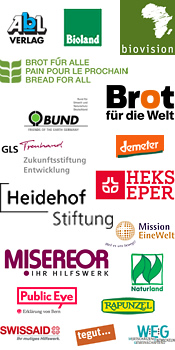Nachricht
15.02.2023 | permalink
Over 76.4 million hectares were farmed organically worldwide in 2021

Organic farmland and retail sales both continued to grow worldwide, according to a new report published by FiBL and IFOAM – Organics International on February 14th. More than 76.4 million hectares of land were farmed organically at the end of 2021, representing a growth of 1.7 % or 1.3 million hectares compared to the previous year. The growth trend of the past years continued although at a slower pace. This is the message of the 24th edition of “The World of Organic Agriculture”, presented at BIOFACH, the world’s leading trade fair for organic food. The report collects data on 191 countries with organic farming activities. Australia has the largest area farmed organically with 35.7 million hectares, but it is estimated that 97 % of the farmland is extensive grazing areas. Argentina ranks second (4.1 million hectares), followed by France with 2.77 million hectares. France reported a significant increase of 8.9 % compared to the previous year. China is ranked fourth with 2.75 million hectares and an increase of 13.1 %, followed by Uruguay with 2.74 million hectares. Due to the large area of organic farmland in Australia, almost half of the global organic area lies in Oceania (36 million hectares). Europe had the second largest area (17.8 million hectares or 23 %), followed by Latin America (9.9 million hectares or 13 %). The highest absolute growth was registered in Europe (up 747,924 hectares or 4.4 %) while Africa showed the strongest relative growth (up 17.3 %). The organic farmland decreased in Latin and North America.
Currently, only 1.6% of the world’s agricultural land is farmed organically, but many countries have far higher shares. In 20 countries, 10% or more of all agricultural land was under organic management in 2021, up from 18 countries in 2020. The top five countries with the largest share of organic land were Liechtenstein (40.2 %), Samoa (29.1 %), Austria (26.5%), Sao Tome and Principe (21.1 %) and Sweden (20.2 %). 86 countries experienced an increase in the area of their organic agricultural land, while a decrease was reported in 37 countries. Many countries kept up or initiated support activities for organic agriculture, including new action plans or policies aiming to foster growth. According to the report, there were 3.7 million organic farmers worldwide and their number increased by 4.9 % compared to the year before. However, the authors point out that calculating precise figures is difficult here because some countries only report the number of companies, projects or growers groups which may each comprise many individual producers, hence the total number might even be higher. Almost half of the world’s organic producers (48.6 %) live in Asia, while Africa is home to 30.6 % and Europe to 12 % of organic producers. The country with the highest absolute numbers is India with 1.6 million farmers, followed by Uganda (400,000) and Ethiopia (218,000).
Consumer demand for organic products across the globe continued to grow, but slower than in 2020. Global retail sales of organic food and drink reached around 125 billion euros in 2021 and experienced a total increase of 4 billion euros (+3 %) from the previous year. In 2021, the United States was the leading market (48.6 billion euros), followed by Germany (15.9bn euros), France (12.7bn euros) and China (11.3bn euros). Estonia was the country that registered the biggest market growth with an increase of 21 %. Looking at the shares the organic market has of the total market, the leader was Denmark with 13%, followed by Austria (11.6 %), Luxembourg (11 %) and Switzerland (10.9 %). Swiss consumers spent the most on organic food with 425 euros, followed by per capita consumer spending in Denmark (384 euros) and Luxembourg (313 euros). “Growth in the global market for organic food and drink slowed in 2021,” writes Amarjit Sahota in a special chapter on the global organic market. “Market growth rates slowed as consumer buying habits returned to pre-pandemic levels. The exceptionally high growth in 2020 was because of COVID-19 elevating consumer interest in health & wellness issues,” he explained. “Organic foods were sought after as consumers focused on disease avoidance and building personal immunity. Demand for organic foods surged after the pandemic began in the spring of 2020. Slower growth occurred in 2021, and there is expected to be lower growth in 2022.” The next edition of “The World of Organic Agriculture” will show how the war in Ukraine, rising food prices, inflation and weakening economic conditions, especially in Europe, will affect the organic food market. (ab)

